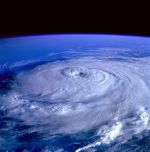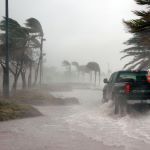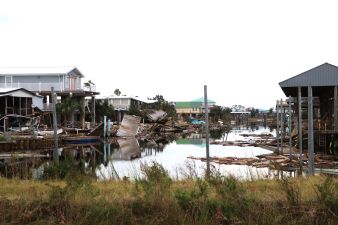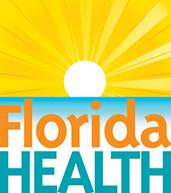It's a New Day in Public Health.
The Florida Department of Health works to protect, promote, and improve the health of all people in Florida through integrated state, county, and community efforts.
Hurricane Preparedness and Safety
Bureau of Preparedness & Response
- 850-245-4040
- health@FLhealth.gov
-
Mailing Address
Florida Department of Health
4052 Bald Cypress Way, Bin A23
Tallahassee, FL 32399
 Hurricanes are powerful and unpredictable, capable of causing widespread destruction through high winds, heavy rainfall, and storm surges. By understanding the risks and taking proactive measures, you can protect your family and property.
Hurricanes are powerful and unpredictable, capable of causing widespread destruction through high winds, heavy rainfall, and storm surges. By understanding the risks and taking proactive measures, you can protect your family and property.
Preparing before the storm, knowing how to act during it, and responding wisely afterward are key to minimizing impacts. Securing your home, assembling an emergency kit, and documenting damages help reduce risks and provide peace of mind.
Planning Before a Hurricane
Preparation is key to hurricane safety. Taking proactive steps, such as gathering supplies and securing your home, reduces risks from winds, rain, and flooding. A solid plan protects your property and offers peace of mind as the storm approaches.
Here are key steps to ensure you're well-prepared and safe:
- Create a Family Emergency Plan
- Gather Emergency Supplies
- Secure Your Home
- Stay Informed
- Prepare Your Vehicle
- Communicate with Neighbors
- Establish Evacuation Routes: Know your local evacuation zones and routes. Practice these routes with your family to ensure everyone is familiar with them.
- Designate Meeting Points: Identify a safe location where your family can reunite if separated, both within and outside your local area.
- Emergency Contacts: Compile a list of important phone numbers, including local emergency services, family members, and neighbors. Ensure everyone has a copy of this list.
- Pet Care Plan: If you have pets, include them in your emergency plan. Identify pet-friendly shelters or hotels in your area and prepare a pet emergency kit with food, water, and medication. Prepare your pet too.
- Assign Responsibilities: Delegate tasks such as gathering supplies, securing outdoor items, or charging electronic devices to household members to ensure everything is covered.
- Food and Water: Stock up on non-perishable food items, bottled water (one gallon per person per day), and baby formula or special dietary items if needed.
- First Aid Kit: Include bandages, antiseptic, medications, and any necessary prescriptions.
- Flashlights and Batteries: Ensure you have multiple working flashlights, extra batteries, and battery-powered or hand-crank radios for updates during power outages.
- Tools and Equipment: Include a multi-tool, duct tape, and a manual can opener.
- Personal Items: Pack hygiene products, a change of clothes, sturdy shoes, and blankets for each household member.
- Documents: Store important documents, such as insurance policies, identification, and medical records, in a waterproof container.
- Power Backup: Fully charge electronic devices and portable power banks. Consider a generator for prolonged outages, ensuring it’s used safely and in a well-ventilated area.
- Inspect and Repair: Check your roof, windows, and doors for vulnerabilities. Make necessary repairs to prevent leaks or structural damage.
- Board Up Windows: Install storm shutters or secure plywood over windows and glass doors to protect against flying debris.
- Reinforce Garage Doors: Ensure your garage door is hurricane-rated or use bracing kits to reinforce it. Garage doors are particularly susceptible to high winds.
- Outdoor Items: Bring in or secure outdoor furniture, decorations, trash cans, and other loose items that could become projectiles in high winds.
- Trim Trees and Shrubs: Remove dead branches or weak trees near your home to reduce the risk of falling limbs during the storm.
- Elevate Valuables: Move important belongings and appliances to higher levels of your home to protect them from potential flooding.
- Monitor Weather Updates: Stay tuned to reliable sources like NOAA Weather Radio, local news stations, and weather apps for the latest storm information.
- Understand Alerts: Familiarize yourself with hurricane watches and warnings. A watch indicates potential hurricane conditions within 48 hours, while a warning means conditions are expected within 36 hours.
- Sign Up for Notifications: Register for local emergency alerts to receive updates directly to your phone or email.
- Fuel Up Early: Fill your gas tank as soon as a hurricane is forecasted. Gasoline supplies may become limited as the storm approaches.
- Check Maintenance: Ensure your vehicle is in good working order, including tires, brakes, and windshield wipers.
- Emergency Supplies in the Car: Pack a small emergency kit for your vehicle, including water, snacks, a flashlight, a first aid kit, and a map of your area.
- Check on Vulnerable Neighbors: Help elderly, disabled, or isolated neighbors who may need help preparing for the storm.
- Share Resources: Coordinate with neighbors to share supplies or tools if necessary.
- Create a Community Plan: Collaborate on evacuation or shelter strategies if local resources are limited.
After preparing for the storm, focus on staying safe during the hurricane. Strong winds, heavy rain, and flooding pose immediate risks, so it's crucial to stay informed, take shelter, and remain alert. The following section offers guidance on what to do during the storm, including staying indoors, protecting electronics, and being ready for changes.
 Staying Safe During the Hurricane
Staying Safe During the Hurricane
When a hurricane makes landfall, your top priority is the safety of yourself and your loved ones. Hurricanes bring dangerous winds, heavy rains, flooding, and storm surges that can escalate quickly. Stay informed, follow local authorities' instructions, and take shelter in secure locations. Proper preparation and safety measures during the storm can help minimize risks.
Below are key steps to follow to stay safe during a hurricane:
- Stay Indoors
- Avoid Flooded Areas
- Limit Electronics Usage
- Listen for Alerts
- Secure Shelter: If you haven’t already, move to a small, windowless room on the lowest level of your home. Ideal spaces include bathrooms, closets, or interior hallways. These areas are more likely to withstand wind damage and provide protection from flying debris.
- Avoid Windows and Glass Doors: Stay away from windows, glass doors, and skylights. These features are particularly vulnerable to breakage, and high winds or flying debris can shatter glass, leading to severe injuries. If possible, cover windows with heavy blankets, or tape them to minimize the risk of breakage.
- Evacuate Mobile Homes: If you live in a mobile home or temporary structure, leave as soon as possible. Mobile homes, trailers, and temporary buildings are at great risk of collapse during hurricanes. Seek shelter in a sturdier structure away from the storm.
- Strengthen Interior Protection: Once you’re inside a secure room, consider adding layers of protection. Use heavy furniture, mattresses, or cushions to reinforce walls or windows if they are at risk of breaking. This can provide additional defense against flying debris and minimize the impact of potential structural failure.
- Do Not Walk or Drive Through Floodwaters: Even six inches of moving water can knock an adult off their feet, and two feet of moving water can sweep away most vehicles. Additionally, floodwaters can hide hazards like sharp objects, debris, or live electrical wires, increasing the risk of injury or death. Always avoid walking or driving through any flooded areas.
- Pay Attention to Storm Surge Warnings: Storm surge is a rise in sea level caused by hurricane winds, and it can result in widespread coastal flooding. In some cases, storm surge waters can inundate areas several miles inland. Listen to local authorities for storm surge warnings and evacuate if you are in a vulnerable zone.
- Avoid Flooded Structures: Do not enter any buildings or basements that have been flooded. Floodwaters can compromise the structural integrity of buildings, potentially causing walls or ceilings to collapse. Additionally, water in basements or lower levels may conceal electrical hazards, posing a significant electrocution risk.
- Conserve Power: Use electronics only for essential tasks to maximize battery life. Fully charge power banks, radios, and other backup devices in advance, and use them sparingly during the storm to keep them operational for communication.
- Prioritize Emergency Communications: Limit phone usage to only emergency calls and messages. Avoid using mobile phones for non-urgent activities, as excessive use can quickly drain battery life. If necessary, use text messages instead of voice calls to reduce network congestion and increase the chances of successful communication.
- Monitor Local News and Weather Updates: Tune in to local news channels, emergency radio stations, or weather apps for real-time updates on storm conditions. These broadcasts will provide essential information about the storm's intensity, its path, and any changes in emergency procedures.
- Emergency Alerts: Sign up for local emergency notifications or tune in to NOAA Weather Radio to receive critical alerts regarding evacuation orders, storm warnings, or changes in the hurricane's impact. These alerts will help you stay ahead of potentially life-threatening conditions.
- Follow Local Authorities' Guidance: Pay attention to any evacuation orders, shelter-in-place instructions, or other directions provided by local emergency management authorities. Following these instructions can help ensure your safety and allow you to avoid areas with the highest risk.
After you’ve taken all the necessary steps to protect yourself, your loved ones, and your property during the storm, it’s important to remain vigilant and prepared for the recovery process. Once the winds subside and the rain fades, it’s crucial to assess the damage, stay informed, and follow local authorities' instructions. The immediate aftermath of a hurricane can bring new challenges, from hazardous debris to flooding risks. The next section will guide you through the necessary steps to ensure safety and begin the recovery process once the storm has passed.
 What to Do After the Storm
What to Do After the Storm
After a hurricane has passed, it’s important to stay vigilant, as hazards can persist. The aftermath of a storm can bring dangers like flooding, downed power lines, and structural damage that may not be immediately obvious. Knowing how to respond safely and effectively is key to ensuring your safety and beginning the recovery process.
Below are essential steps for post-hurricane recovery and protection:
- Assess and Report Damage Safely
- Follow Official Evacuation Orders
- Document Damage for Insurance Claims
- Restock Your Emergency Kit
- Stay Inside: Wait for the "all clear" from local authorities before leaving your shelter. Even after the storm has passed, hazards such as downed power lines, sharp debris, and unstable structures may still pose significant risks.
- Avoid Floodwaters: Do not enter or drive through flooded areas. Floodwaters may be contaminated with chemicals, sewage, or debris, and they can also carry hidden electrical hazards due to downed power lines.
- Structural Damage: Inspect your property for any signs of structural damage, including cracks in the roof, walls, and foundation. If you notice damage, take photos for insurance claims and contact your insurance provider immediately to begin the claims process.
- Wait for the All-Clear: If you evacuated, do not return home until local authorities officially announce that it is safe to do so. Even after the storm passes, hazards such as downed power lines, flooding, and structural damage may still pose risks.
- Monitor Evacuation Routes: Stay informed about when and how to return to your area, as some roads may be impassable or rerouted due to damage.
- Avoid Travel in Flooded Areas: Even if the storm has passed, avoid traveling through areas that are flooded. Floodwaters can be deeper and more dangerous than they appear, and submerged roads may be unstable or washed out.
- Take Detailed Photos and Videos: Capture clear, comprehensive images and videos of all damage to your property, home, or business. Include wide-angle shots and close-ups to document structural damage, flooding, and any other affected areas.
- Focus on Key Areas: Ensure you photograph key areas such as the roof, windows, doors, electrical systems, and any personal property that has been damaged.
- Do Not Make Permanent Repairs: Avoid making permanent repairs until your insurance adjuster has assessed the damage. Temporary fixes, such as covering broken windows or tarping a damaged roof, can be made to prevent further damage but should be documented first.
- Keep a Detailed Inventory: List damaged items, including descriptions, purchase dates, and approximate values. If possible, refer to receipts or records of the items.
- Contact Your Insurance Company: Notify your insurance company as soon as possible after the storm. Provide them with the documentation and follow their instructions for filing a claim.
- Submit Documentation Promptly: File your insurance claim promptly to begin the recovery process and to meet any deadlines set by your insurance provider.
- Replace Used Items: After a storm, replace any items from your emergency kit that were used, such as food, water, batteries, or first aid supplies.
- Check Expiration Dates: Review and replace expired food, medications, and other time-sensitive supplies to ensure your kit remains effective.
- Ensure Kit Readiness: Verify that your emergency kit includes all essential items such as non-perishable food, water (at least one gallon per person per day for three days), flashlights, batteries, and a first aid kit.
- Update Based on Needs: If you or a family member have developed new medical conditions or needs, update your kit to include the necessary medications and medical supplies.
To ensure preparedness for hurricane season in Florida, it's vital to understand potential health hazards and how to plan effectively. Resources like the Hurricane Information Factsheet and the comprehensive Hurricane Information page offer essential guidance
In the aftermath of a storm, prioritizing safety and recovery is crucial. By planning ahead, staying informed, and taking decisive actions before, during, and after the storm, you can reduce risks and protect yourself and your property. Preparedness involves not only securing your home and gathering supplies but also following official guidance to safely navigate the storm’s aftermath. Regularly reviewing and updating your emergency plans and supplies ensures you’re ready for any situation. Stay safe, stay informed, and be prepared, your proactive efforts today will give you peace of mind and a quicker recovery tomorrow.
This guide is based on information from trusted organizations including Ready.gov, FEMA, the National Weather Service, and FloridaDisaster.org, which provide expert guidance on emergency preparedness, safety measures, and recovery following a hurricane.
Disclaimer: The links and content provided on this page are for informational purposes and your convenience. The Florida Department of Health (DOH) does not endorse, approve, or guarantee the products, services, or opinions offered on external websites. Furthermore, the DOH is not responsible for the accuracy, content, or availability of these external sites. For questions or concerns, please contact the external site directly.



Connect with DOH